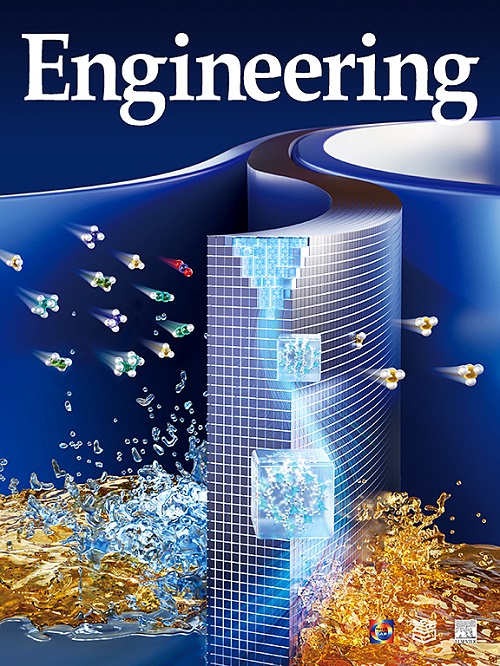巨噬细胞相关炎症体的激活会通过 15-HETE 介导的途径加剧急性心肌梗死中的心肌纤维化
IF 10.1
1区 工程技术
Q1 ENGINEERING, MULTIDISCIPLINARY
引用次数: 0
摘要
这项研究阐明了心肌梗塞(MI)后NOD样受体家族含吡啶结构域3(NLRP3)炎性体激活的时空动态,这一过程的特征尚未完全确定。我们发现了NLRP3炎症小体在心肌梗死小鼠体内的早期激活,并描述了其动态的时间表达。值得注意的是,我们发现敲除和抑制 Nlrp3 的表达能显著减轻梗死面积并增强心脏功能。此外,我们对炎性体激活的空间特征进行的分析表明,在心肌梗死后的第三天,巨噬细胞中的炎性体激活占主导地位,成纤维细胞中的炎性体激活也随之发生。为了阐明巨噬细胞相关的 NLRP3 炎症小体活化与心肌纤维化之间的关系,我们采用了炎症性氧脂的靶向代谢组学分析、小干扰 RNA(siRNA)干扰实验和各种分子测定。这些研究结果表明,巨噬细胞相关炎性体的激活可通过 15-羟基-5,8,11,13-二十碳四烯酸(15-HETE)介导的抗十瘫小母细胞(Smad)通路促进成纤维细胞转化为肌成纤维细胞。此外,质谱成像(MSI)和靶向代谢组学分析证实,在心肌梗死小鼠以及心肌梗死和急性冠状动脉综合征(ACS)患者体内,15-HETE 水平显著增加。我们的综合数据集表明,MI 中 NLRP3 炎性体的激活具有不同的时间和空间模式。这些发现标志着我们在制定精确的心肌梗死预防和治疗策略,尤其是早期心肌纤维化干预策略方面取得了重大进展。本文章由计算机程序翻译,如有差异,请以英文原文为准。
Activation of the Macrophage-Associated Inflammasome Exacerbates Myocardial Fibrosis Through the 15-HETE-Mediated Pathway in Acute Myocardial Infarction
This investigation elucidates the spatiotemporal dynamics of NOD-like receptor family pyrin domain containing 3 (NLRP3) inflammasome activation following myocardial infarction (MI), a process that has not been fully characterized. We revealed early activation of the NLRP3 inflammasome in mice with MI and characterized its dynamic temporal expression. Notably, the knockout and inhibition of Nlrp3 expression were found to significantly mitigate infarct size and enhance cardiac function. Furthermore, our analysis of the spatial characteristics of inflammasome activation revealed predominant activation in macrophages and subsequent activation in fibroblasts on the third day post-MI. To elucidate the nexus between macrophage-associated NLRP3 inflammasome activation and myocardial fibrosis, we employed targeted metabolomics analyses of inflammatory oxylipins, small interfering RNA (siRNA) interference experiments, and various molecular assays. These findings revealed that macrophage-associated inflammasome activation facilitates the conversion of fibroblasts into myofibroblasts via the 15-hydroxy-5,8,11,13-eicosatetraenoic acid (15-HETE)-mediated small mother against decapentaplegic (Smad) pathway. Additionally, both mass spectrometry imaging (MSI) and targeted metabolomics analyses confirmed the significant increase in 15-HETE levels in mice with MI and in patients with MI and acute coronary syndrome (ACS). Our comprehensive dataset suggests that NLRP3 inflammasome activation in MI is characterized by distinct temporal and spatial patterns. These insights mark a significant advancement toward precise MI prevention and treatment strategies, particularly early myocardial fibrosis intervention.
求助全文
通过发布文献求助,成功后即可免费获取论文全文。
去求助
来源期刊

Engineering
Environmental Science-Environmental Engineering
自引率
1.60%
发文量
335
审稿时长
35 days
期刊介绍:
Engineering, an international open-access journal initiated by the Chinese Academy of Engineering (CAE) in 2015, serves as a distinguished platform for disseminating cutting-edge advancements in engineering R&D, sharing major research outputs, and highlighting key achievements worldwide. The journal's objectives encompass reporting progress in engineering science, fostering discussions on hot topics, addressing areas of interest, challenges, and prospects in engineering development, while considering human and environmental well-being and ethics in engineering. It aims to inspire breakthroughs and innovations with profound economic and social significance, propelling them to advanced international standards and transforming them into a new productive force. Ultimately, this endeavor seeks to bring about positive changes globally, benefit humanity, and shape a new future.
 求助内容:
求助内容: 应助结果提醒方式:
应助结果提醒方式:


